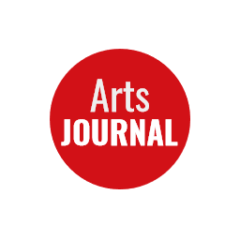“This is what makes Gates such a great and interesting artist: his deep awareness of the history of materials, from fired clay to roofing tar and brick, to paperback books and runs of newsstand magazines, to the malleability of language. His research into Black history and the context in which materials and commonplace products have been used transcends the aesthetic divide between high and low.” – Hyperallergic
Category: visual
How A Black Art Library Grew From Idea To Reality
Asmaa Walton had the idea at the end of 2019, and shared it during Black History Month of this year. “I was just like, I’m just going to start collecting the books to see what happens. I started collecting books and I made an Instagram account for it. Over time, people actually got really interested in it. I started to shift my view that maybe this needs to be a physical location. I started to formulate a plan to make this a real space that people can come and enjoy.” – Hyperallergic
Portraits Of First-Wave NHS Workers Helped Both Artists And Frontline Medical Staff
Tom Croft, an artist who usually listens to the radio while he works, couldn’t continue to do it while the pandemic raged in the spring. One day, he “started to think about the portraits of the great and the good that line our art galleries, and the fact that the Covid-19 pandemic will be one of the defining events of the 21st century. Why not commemorate NHS workers in the same way?” – The Guardian (UK)
How To Look (In Detail) At A Durer Self-Portrait
By the end of the 15th century, the self-portrait has become an act of self-fashioning: how I present myself to you. Dürer’s self-portraits were not the very first, but he made himself his subject with uncommon frequency. – The New York Times
Dutch Museums Launch Comprehensive Van Gogh Database
A new database called Van Gogh Worldwide allows users to access provenances, technical information, archival materials, and more related to 1,000 works on paper and paintings by the famed Post-Impressionist. Launched on Thursday, the database is a collaboration between the Kröller-Müller Museum, the Van Gogh Museum, and the RKD–Netherlands Institute for Art History, along with the Cultural Heritage Laboratory of the Cultural Heritage Agency of the Netherlands. – ARTnews
What The American Election Means For The Art Market
“What’s the difference between the government bond that pays 0% and a Rothko painting that pays 0%? They’re both things that have some kind of value and they can go up in value over time or down in value over time. And you’re not going to be able to live off either of them, but at least the Rothko makes you feel cultured.” – The Art Newspaper
French Senate Approves Return Of Artworks To Benin And Senegal
The legislation, required for museums to release the items and ratified unanimously by the senators, concerns 26 statues in the Musée du Quai Branly in Paris that were taken from Benin by French soldiers in 1892 as well as a ceremonial sword that came from Senegal and is currently on loan to a museum there. – ARTnews
Sinkholes Threaten To Swallow Historic Churches In Naples
No, not the city in Florida, America’s sinkhole hub. “Many of the historic cathedrals, churches and chapels of Naples, Italy are at risk of vanishing into the earth, according to new research published in the Journal of Cultural Heritage. … Nine [churches] are built over subterranean cavities, on ground affected by ‘ongoing deformation’, making these areas highly susceptible to sudden collapse … [while] a further 57 places of worship lie above ‘potential future cavity collapses’.” – The Art Newspaper
Photographers Play Key Role In Nigerian Protests Against Police Violence And Extortion
“Local artists are working tirelessly to keep the demonstrations in the headlines by producing indelible images that seek to combat misinformation and capture the unprecedented protest movement in real time.” – Artnet
Construction Of Ancient Mega-Stone Henge Might Have Been Resistance To Progress
“You could look at it as the last hurrah of the stone age. They could see the changes coming and decide to resist them – they may have been thinking: ‘We don’t need these changes. We’ll build bigger and better monuments to our gods. We’ll knuckle down and stick with what we know’.” – The Guardian
